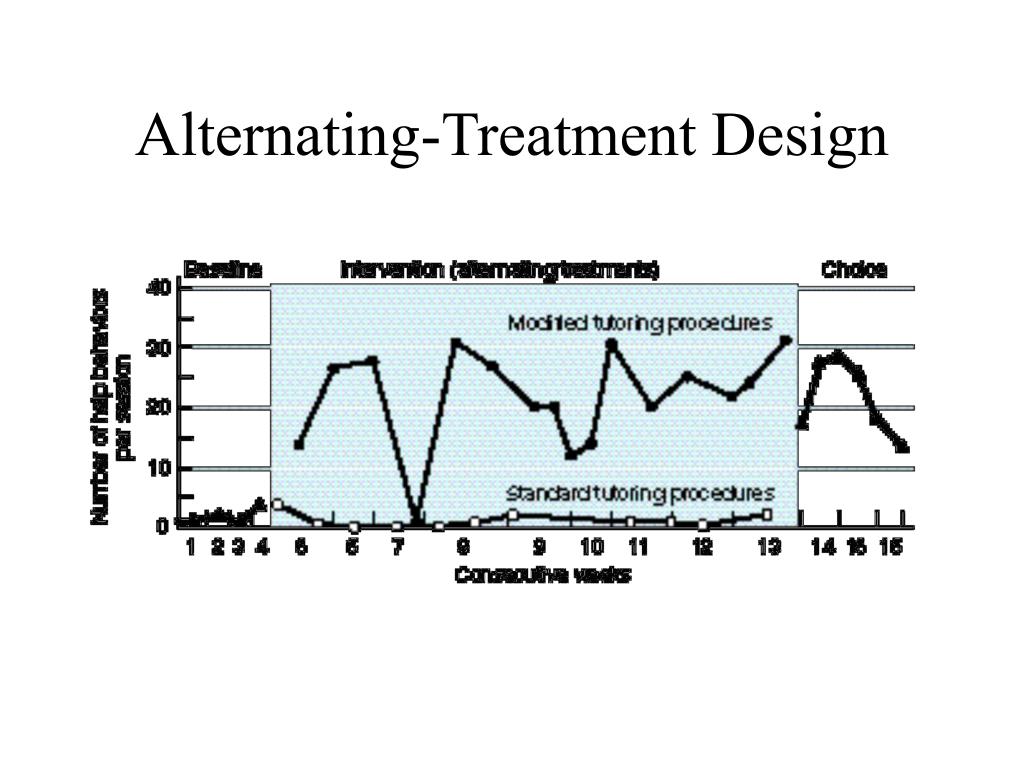Table Of Content

The inclusion of randomization of condition ordering in the design also allows the investigator to use a specific analytical technique called randomization tests (Edgington, 1967, 1975). Randomization tests are applicable across different kinds of SCEDs (Craig & Fisher, 2019; Heyvaert & Onghena, 2014; Kratochwill & Levin, 2010), as long as there is randomization in the design, such as the random assignment of conditions to measurement occasions (Edgington, 1980; Levin et al., 2019). Randomization tests are also flexible in the selection of a test statistic according to the type of effect expected (Heyvaert & Onghena, 2014). In particular, the test statistic can be defined according to whether the effect is expected to be a change in level or in slope (Levin et al., 2020), and whether the change is expected to be immediate or delayed (Levin et al., 2017; Michiels & Onghena, 2019). The test statistic is just the computation of a specific measure of the difference between conditions that is of interest to the researcher for which a p-value will be obtained. Owing to the presence of randomization in condition ordering, there is no need to refer to any theoretical sampling distribution that would require random sampling.
Andy LeCompte Salon
Examples of their use are provided in the section entitled “Illustrations and Comparison of the Results,” including a graphical representation of most of these techniques. In Table Table1,1, we also refer to the particular figure that represents an application of a technique. Arguably one of the prettiest hair salons in Los Angeles—and one of the highest reviewed on Yelp—Atelier by Tiffany is where you go to get pampered. There are a variety of services, ranging from haircuts and custom color to wedding hairstyles and treatments, making it a one-stop shop for any special events you may have coming up. The duration of an Alternating Treatment Design study can vary depending on the specific goals and needs of the child, but it often extends over several weeks to gather sufficient data for meaningful analysis. Yes, Alternating Treatment Design can be used to evaluate a wide range of interventions, such as communication methods, behavior management techniques, or social skills training programs.
Patrick Onghena
For example, if one's objective were to teach or establish a new behavior that an individual could not previously perform, returning to baseline conditions would not likely cause the individual to “unlearn” the behavior. Similarly, studies aiming to improve proficiency in a skill through practice may not experience returns to baseline levels when the intervention is withdrawn. In other cases, the behavior of the parents, teachers, or staff implementing the intervention may not revert to baseline levels with adequate fidelity. In other cases still, the behavior may come to be maintained by other contingencies not under the control of the experimenter.
REHAB Salon

In Los Angeles, the options for remodeling services include hiring an architect/interior designer along with a general contractor, solely a general contractor or builder, or a design-build firm. While general contractors are readily available, finding one with experience in your specific project scope, budget, building type, and location in Los Angeles can be a challenge. It’s also important to consider their communication style and level of professionalism to ensure a good match.
Visual Analysis
Photo-alternating current-electrocoagulation technique: Studies on operating parameters for treatment of industrial ... - ScienceDirect.com
Photo-alternating current-electrocoagulation technique: Studies on operating parameters for treatment of industrial ....
Posted: Wed, 27 Mar 2024 01:11:16 GMT [source]
All participants were 5 years old and were enrolled full time in a preschool for children with ASD that based instruction on the principles of behavior analysis. The school’s clinical director and teachers referred participants to the interventionist because the students exhibited difficulties acquiring skills. In particular, the staff reported that the participants demonstrated difficulty learning one-step directions. In 2 years prior to the study, James acquired only two one-step directions, Joseph did not acquire any one-step directions, and Sean acquired three one-step directions. In addition, teaching participants to follow one-step directions may be conceived as a behavioral cusp (Rosales-Ruiz & Baer 1997), functioning as a prerequisite skill for more advanced behaviors. Research has demonstrated that most-to-least (MTL) and least-to-most (LTM) prompting are effective in helping children with Autism Spectrum Disorders acquire a variety of new skills.
Increased communications of chronic mental patients by reinforcement and by response priming.
In this phase, the interventionist identified target responses to be used in the subsequent phases of the study. Ten new one-step directions were selected from Teaching language to children with autism or other developmental disorders (Sundberg & Partington 1998). The interventionists chose targets that were not part of the participant’s current or past preschool intervention. Additionally, no one-step directions that specifically stated an object manipulation (e.g., “Touch ball!”) or explicit body part manipulation (e.g., “Touch nose!”) were tested. During a trial, the interventionist provided one of the 10 one-step directions and waited 5 s for the participant to respond. After 5 s, regardless of the participant’s responses, the interventionist initiated a new trial.
Sequential contrast effects with human subjects.
In addition, the carefully controlled conditions in which RCTs must be conducted to ensure that the results are interpretable may not be comparable and/or possible to implement in real-life (i.e., uncontrolled) conditions. SSEDs are an ideal tool for establishing the viability of treatments in real-life settings before attempts are made to implement them at the large scale needed for RCTs (i.e., scaling up). Ideally, several studies using a variety of methodologies will be conducted to establish an intervention as evidence-based practice. When a treatment is established as evidence based using RCTs, it is often interpreted as meaning that the intervention is effective with most or all individuals who participated. Thus, systematic evaluation of the effects of a treatment at an individual level may be needed, especially within the context of educational or clinical practice. SSEDs can be helpful in identifying the optimal treatment for a specific client and in describing individual-level effects.
Why is the reversal—the removal of the treatment—considered to be necessary in this type of design? Notice that an AB design is essentially an interrupted time-series design applied to an individual participant. Recall that one problem with that design is that if the dependent variable changes after the treatment is introduced, it is not always clear that the treatment was responsible for the change. It is possible that something else changed at around the same time and that this extraneous variable is responsible for the change in the dependent variable.
The last five sessions were conducted beyond the aforementioned 50 % sessions rule (see the “Prompt Hierarchy Comparison and Target Reassignment” section) because an ascending trend in correct responding was observed. During the additional sessions, responding returned to a lower level and the intervention was then discontinued. The control condition targets were also reassigned to MTL prompting, and James mastered these targets with MTL prompting in 13 sessions.
Although, in theory, these types of designs can be extended to compare any number of interventions or conditions, doing so beyond two becomes excessively cumbersome; therefore, the alternating treatments design should be considered. Because replication of the experimental effect is across conditions in multiple-baseline/multiple-probe designs, they do not require the withdrawal of the intervention. This can make them more practical with behaviors for which a return to baseline levels cannot occur. Depending on the speed of the changes in the previous conditions, however, one or more conditions may remain in the baseline phase for a relatively long time.
The most basic single-subject research design is the reversal design, also called the ABA design. This is the level of responding before any treatment is introduced, and therefore the baseline phase is a kind of control condition. When steady state responding is reached, phase B begins as the researcher introduces the treatment.
In addition to visual comparison, a quantification using only the obtained (observed) measurements may be preferable to a quantification using the interpolated values from the ALIV. A possible quantification using only observed values is the “average difference between successive observations” (ADISO; Manolov & Onghena, 2018). As suggested by Ledford et al. (2019), measurements from one condition are compared to adjacent measurements of the other condition. The calculations focus on level, whereas potential distinct trends are quantified via increasing or decreasing differences between adjacent values. For an ATD with block randomization of condition ordering, it is straightforward to perform the comparisons within blocks.

No comments:
Post a Comment